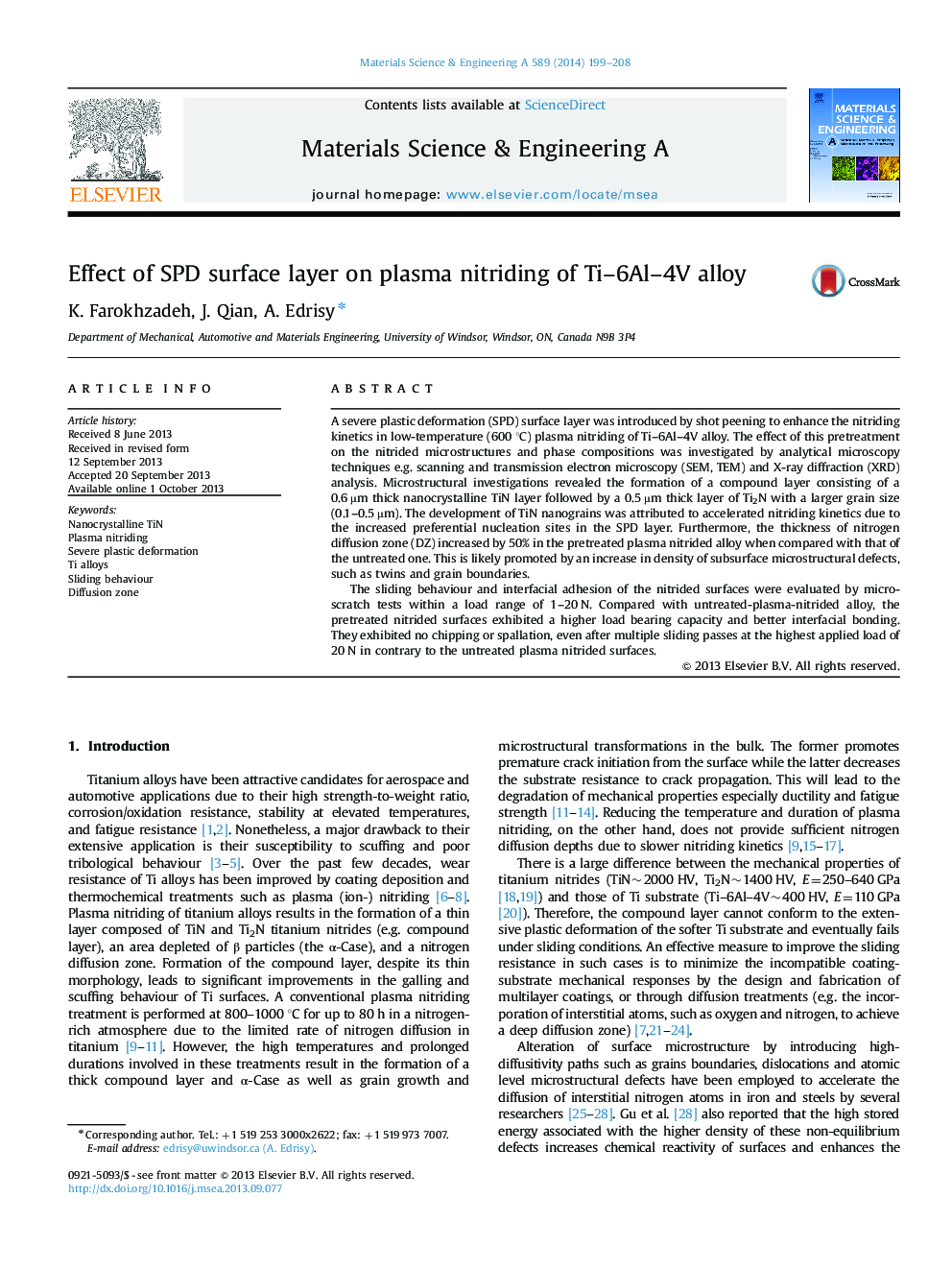| Article ID | Journal | Published Year | Pages | File Type |
|---|---|---|---|---|
| 1575712 | Materials Science and Engineering: A | 2014 | 10 Pages |
A severe plastic deformation (SPD) surface layer was introduced by shot peening to enhance the nitriding kinetics in low-temperature (600 °C) plasma nitriding of Ti–6Al–4V alloy. The effect of this pretreatment on the nitrided microstructures and phase compositions was investigated by analytical microscopy techniques e.g. scanning and transmission electron microscopy (SEM, TEM) and X-ray diffraction (XRD) analysis. Microstructural investigations revealed the formation of a compound layer consisting of a 0.6 µm thick nanocrystalline TiN layer followed by a 0.5 µm thick layer of Ti2N with a larger grain size (0.1–0.5 µm). The development of TiN nanograins was attributed to accelerated nitriding kinetics due to the increased preferential nucleation sites in the SPD layer. Furthermore, the thickness of nitrogen diffusion zone (DZ) increased by 50% in the pretreated plasma nitrided alloy when compared with that of the untreated one. This is likely promoted by an increase in density of subsurface microstructural defects, such as twins and grain boundaries.The sliding behaviour and interfacial adhesion of the nitrided surfaces were evaluated by micro-scratch tests within a load range of 1–20 N. Compared with untreated-plasma-nitrided alloy, the pretreated nitrided surfaces exhibited a higher load bearing capacity and better interfacial bonding. They exhibited no chipping or spallation, even after multiple sliding passes at the highest applied load of 20 N in contrary to the untreated plasma nitrided surfaces.
